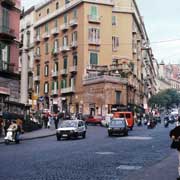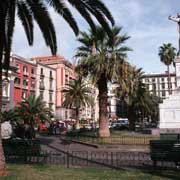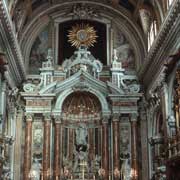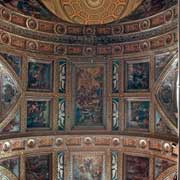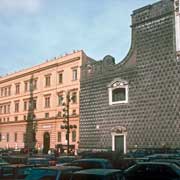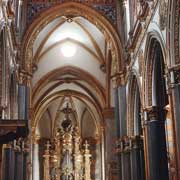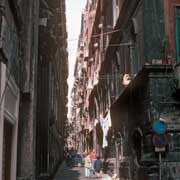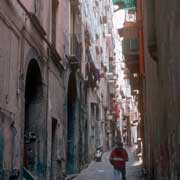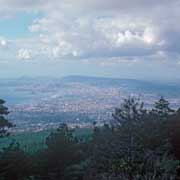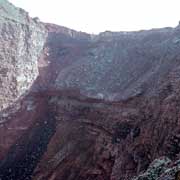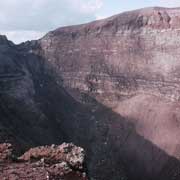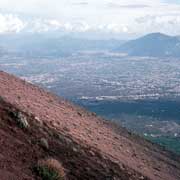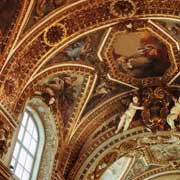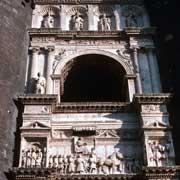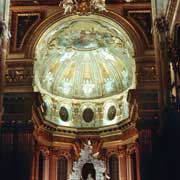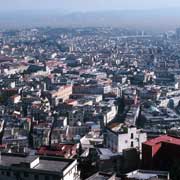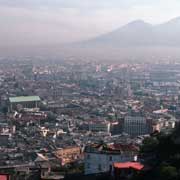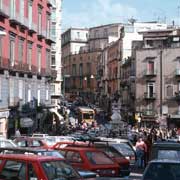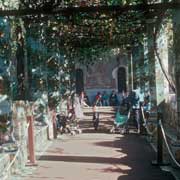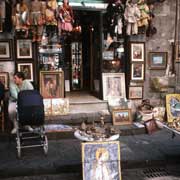Photos of Naples, city below a volcano, Italy
Naples, city below a volcano
Naples (Napoli) is the third-largest city of Italy, with over a million people, situated on the Bay of Naples. It is the capital of the region of Campania, an important seaport, manufacturing and tourism centre: the bay with its islands like Ischia and Capri, the Amalfi coast, Mt. Vesuvius and the Roman towns of Pompeii and Herculaneum are all nearby.
you may then send it as a postcard if you wish.
About 600 BCE, Greek colonists from Cumae, 23 kilometres to the west, founded a town near present-day Naples. According to legend, they first called it Parthenope but later renamed it Neapolis (New City). The Romans conquered it about 326 BCE; they made the area a favourite place to relax for various Roman emperors, including Augustus and Nero. From the 1100s until 1860, Naples was ruled by multiple foreign invaders, including Arabs, Normans, French, Austrians, and Spanish. In 1734, the city became the capital of an independent country called the Kingdom of the Two Sicilies. It became part of the Kingdom of Italy in 1860, and since 1861, the city has been the capital of Campania.
Naples is a city of extreme contrasts, with scenes of great beauty mixed with crowded slums. In the eastern section, church spires rise above old tenement buildings and factories. The Spaccanapoli district, with its crowded, narrow streets, forms the heart of old Naples. The newer western part of the city lies along the Riviera di Chiaia, a broad drive running 5 kilometres along the Bay of Naples. The Vomero, a hilly, densely populated modern section, lies inland. The city boasts beautiful cathedrals and castles dating back to medieval times.



